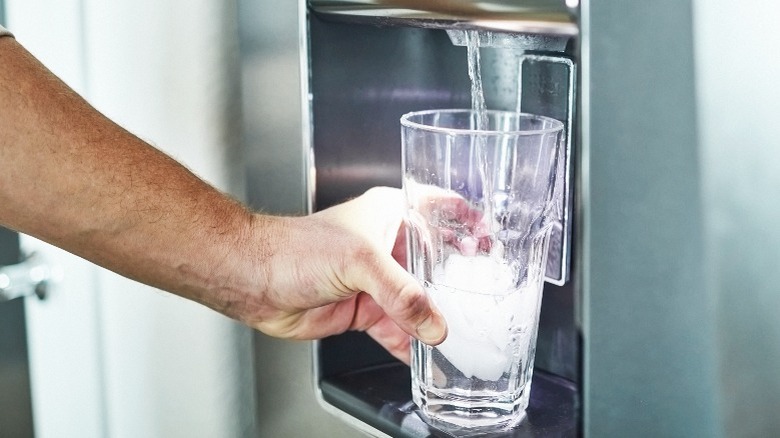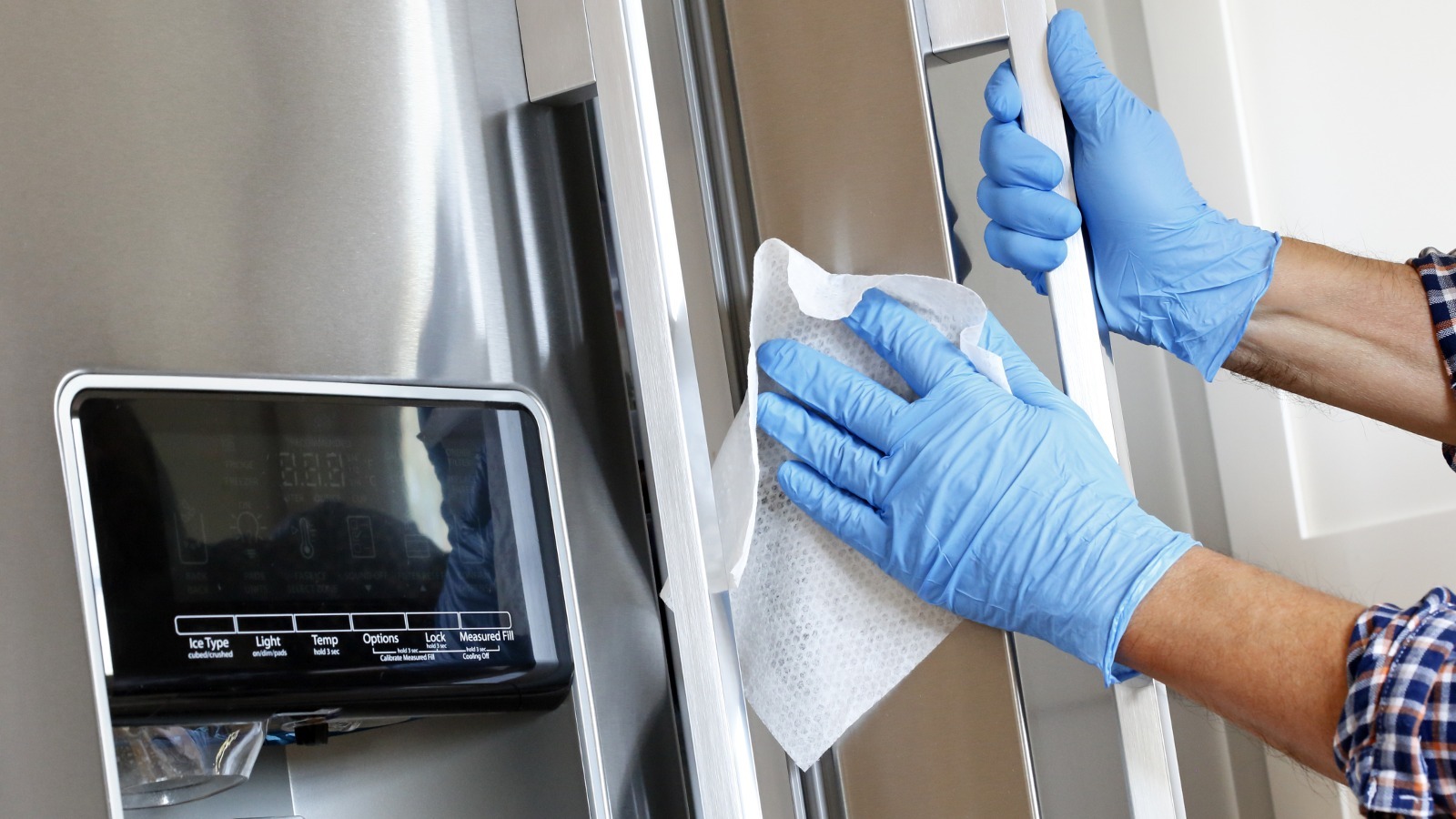Cleaning the refrigerator is a task that’s easy to overlook until we’re faced with bad smells or dirty shelves. But did you know that one commonly neglected spot in your fridge could be the reason your water tastes funny? Even if you’re a pro at routinely deep cleaning your fridge like Marie Kondo, there’s one part of it you might be forgetting: the water dispenser.
You should aim to clean the dispenser every three to six months, though you may need to more often if you have hard water. Hard water contains a higher concentration of minerals such as calcium and magnesium, which can build up in your dispenser over time. Mineral buildup causes your water to taste off, and it can harm the fridge itself, reducing its efficiency and lifespan. It can also lead to bacterial and mold growth, which may contaminate your water and ice.
If you experience lower water pressure or if the ice or water starts smelling or tasting off, then it’s definitely time to clean the water dispenser. Your water filter should be replaced twice per year, so getting into the habit of cleaning the dispenser at that time can help you remember to do it regularly.
How to clean your fridge’s water dispenser

Generally, there are three main parts of the fridge water dispenser to clean: the nozzle, the tray, and the water line. Cleaning the line involves turning off the water supply, running a cleaning solution — made with either distilled white vinegar (an excellent cleaning agent) or eco-friendly soap — through the line and letting it sit, then flushing it out with clean water. To turn off the water supply, look for a shut-off valve. Its location varies, but common spots are inside or behind the fridge or under the kitchen sink.
The valve is typically a metal toggle or knob connected to copper tubing. If you have trouble finding it, refer to your fridge’s manual or consider hiring a professional for assistance. Using your vinegar, scrub the water nozzle well. A toothbrush or small brush or sponge works well to get at the inside and outside. To clean the water line, you’ll need about 2 to 3 cups of vinegar. Use a funnel to pour the vinegar into the water line. It might be helpful to have an extra person to hold a container under the dispenser while you pour.
Let the vinegar sit in the line for around 10 minutes to soften the mineral deposits, which will make them easier to remove. Next, flush the line with clean water to remove any remaining vinegar. Repeat this as needed until the water flows clear and tastes fresh — vinegar is non-toxic, but you probably don’t want to taste it in your glass of water. It’s a good idea to clean your ice machine at the same time, as it uses the same water system as the dispenser. By maintaining these areas regularly, you can ensure your water and ice remain clean and consistently taste fresh.







